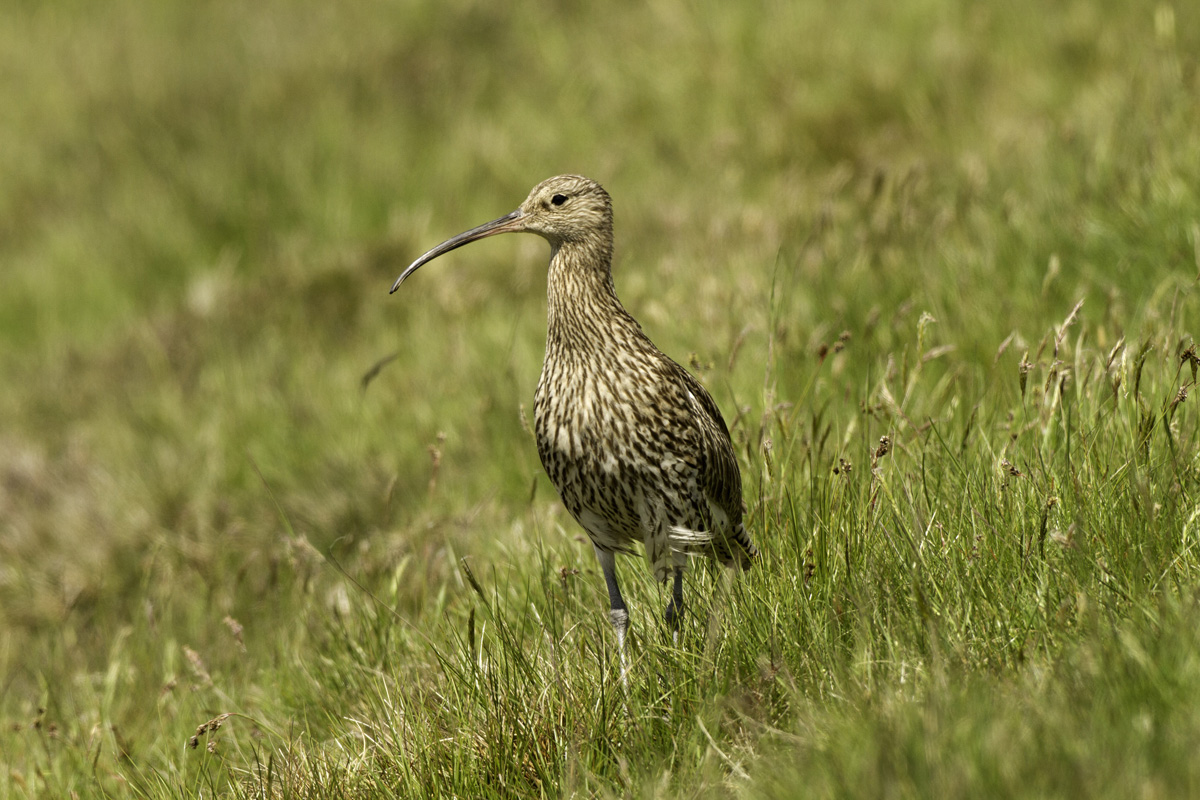Shropshire Curlew Group: Terms of Reference

Curlew. (Photo: John Harding)
The UK is estimated to hold a quarter of the global population of Curlew, a near-threatened species on the IUCN red list. Within Shropshire the species has shown a 62% reduction in range between the Breeding Bird Atlases in 1985-90, and 2008-13. In 1990 the population was estimated at 700 pairs, but the estimate of 160 pairs in 2010 represents a catastrophic 77% decline in only 20 years.
Curlews have disappeared from many parts of the County. Remaining centres of population are around:
- Stiperstones/Stapeley/Long Mynd
- Clun Forest
- Clee Hills
- Stretton Hills
- Oswestry Hills
- Vyrnwy confluence
- Northern Mosses
Remaining pairs are widely scattered throughout the county.
Primary aims
- To provide a strategic county-level oversight of Curlew conservation in Shropshire
- To support the co-ordination of conservation and recovery work
- To support Curlew recovery projects in their development, delivery and legacy
- To support volunteers and communities to engage in Curlew conservation, though the network of community wildlife groups
Secondary aims
- To identify funding opportunities to support curlew recovery work
- To provide a link to national and international curlew conservation work
- To ensure the findings from county recovery and research projects are shared widely
- To highlight the plight of Shropshire’s Curlews
Co-ordination
The work of the Group will be co-ordinated by Shropshire Wildlife Trust.
Representation
The Group has the following representation:
- Community Wildlife Groups
- Curlew Country (Stiperstones & Corndon LPS)
- National Trust
- Natural England
- RSPB
- Shropshire Ornithological Society
- Shropshire Wildlife Trust
Additional members will be co-opted to become core or collaborative members either permanently or temporarily as required, with the agreement of at least three quarters of the core membership.
The group will aim to meet quarterly, though meeting frequency can be amended as required.
Return to Save Our Curlews Campaign
